Turkish baths, which take place in hamams, are a special part of Turkish culture. For centuries, Turkish people have been bathing in these public bathing houses as not just a means to get clean, but for medicinal and spiritual purposes too.
But in Turkey, men and women are separated, and the experience is different for each gender (according to our experience, we compared notes afterwards).
As a woman visiting Turkey, it can be difficult to know what to do at a women’s Turkish Bath and know what to expect, which is why I’ve decided to write this guide so you can avoid any unwanted embarrassment and know what to expect.
Before I went for a Turkish bath, I had no clue what to expect, and I also went to a very local and traditional hammams where English wasn’t widely spoken. Based on my personal experience, I’ve shared everything you need to know about Turkish baths for women, including what happens and the what to wear when visiting.
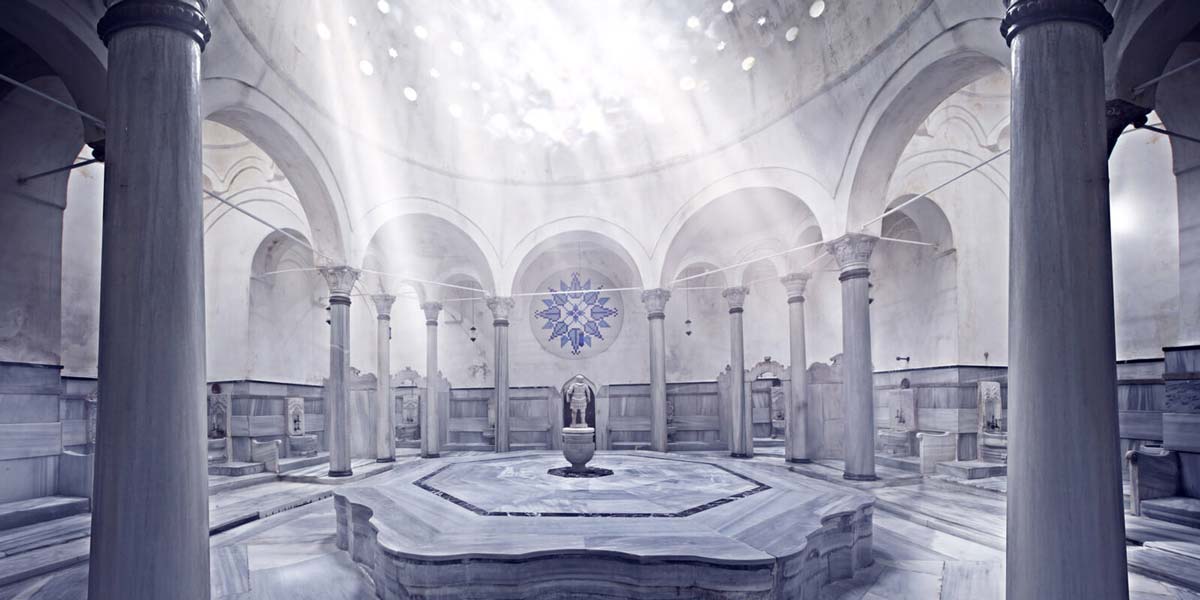
What Is A Turkish Bath?
If you’ve ever experienced a Roman Bath before and you expect to see yourself sitting in a pool of hot water surrounded by strangers as you stare at the mosaics on the walls, engage in chit-chat with others, and contemplate your life, think again.
A Turkish Bath is not the same as a Roman Bath. Yes, the idea came from the Romans who occupied Constantinople (otherwise known as ancient Istanbul) before it was seized by the Ottoman Empire, but the Ottomans bought their own uniqueness to the concept of public bathing.
The Ottomans believed bathing in a hamam (Turkish bathhouses) can help with weight reduction, as well as help with aching muscles, expel toxins and stimulate cell turnover (making your skin look softer and smoother) as well as help with acne and dermatitis, and of course, relaxation purposes. Bathing is also a special part of the prayer ritual in Islam, as you must wash your hands, head, and feet before prayer.
The architecture and bathing tradition is the only similarity between Roman and Turkish baths, otherwise, a Turkish hamam (sometimes spelled hammam) is very different.
So, what can you expect from a Turkish bath?
As mentioned before, men and women are usually separated in traditional Turkish hamams, though some luxury hotels will have couple experiences.
The bathing ritual is the same for both sexes, to some degree. While the name implies a bath of hot water to bath in, a Turkish bath is actually more focused on a scrub and massage ritual than an actual bath.
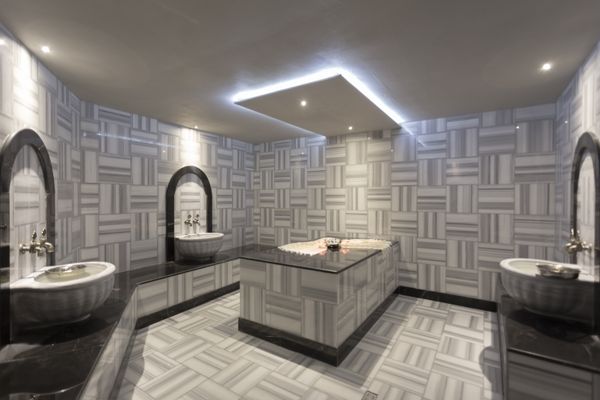
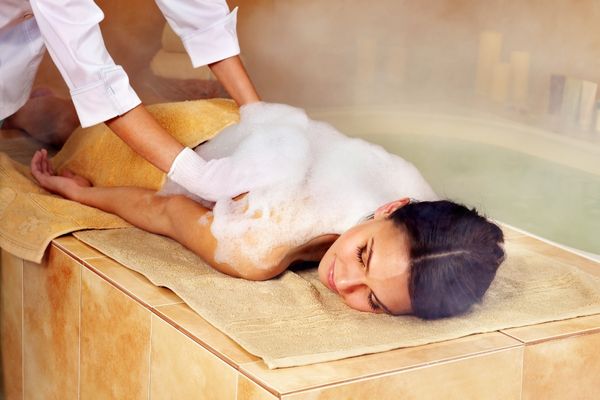
There are usually a number of different services you can pick from from your bath experience. Most baths come with time spent in the steam room, a scrub from your attendant, time spent in a sauna room, and a massage of some description.
Some hamams offer Bali massages, Thai massages, and hot stone massages, or even a clay mask, which are operated by your tellak (a male attendant) or natir (a female attendant), though this is not traditional. A traditional Turkish bath will have a full body massage with oil, which is rubbed into the pores of your skin and left to soak in.
For women, you would only be attended to by a natir. If it’s your first time, your natir will guide you through the whole experience, from the washing and scrubbing to the massage.
Traditional Turkish baths usually take around an hour and a half, which includes 45 minutes of washing. The washing part of the experience includes a traditional body scrub with a handwoven wash cloth, known locally as a kese, followed by a foam wash and then a massage with foam.
It’s important to note that some Turkish hamams will segregate their services by time, meaning men can come at one time of day and women at another, so it’s a good idea to check the opening times for female Turkish baths before visiting.
What happens during a Turkish bath?
Upon your arrival at the Turkish bath you will be taken to a room to change out of your streetwear. From my experience, most Turkish hamams require you to be topless and wear bikini bottoms or undergarments underneath. I wore a swimming costume, and my attendant asked me to roll it down so she could scrub my chest. Bring your swimsuit with you, and if you’re unsure what to wear, ask the attendant.
You will be given a peshtemal, which is a thin cotton towel used to wrap around you during your bath and hide your modesty. You will usually also be given a regular towel to dry yourself after bathing, but it’s always a good idea to bring your own just in case.
Almost all historic baths will have a dressing room / locker room where you can put your bathing suit on and have lockers to store your bags and belongings.
Once you’re ready, your bath attendant will take you into a warm section of the hamam. This is where the experience starts.
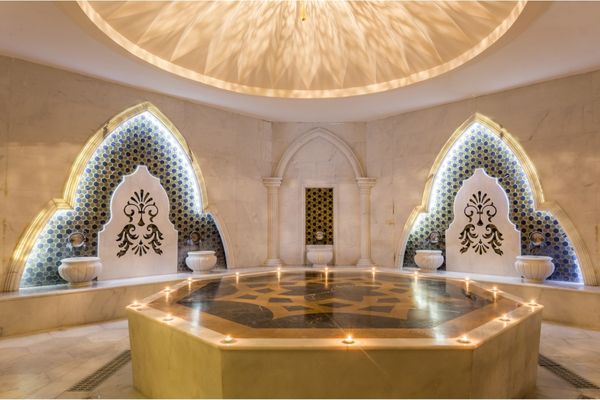
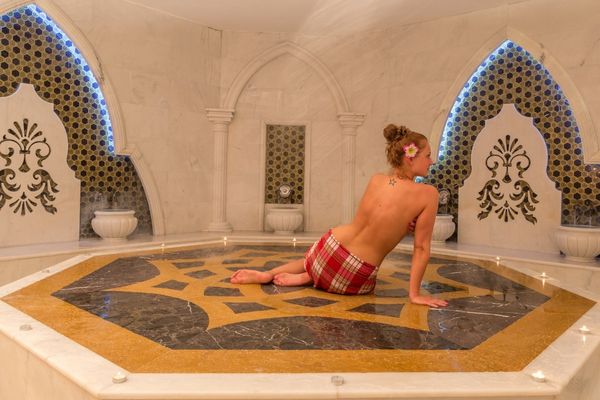
The warm room is the most beautiful room in the hamam. It’s a steam room, usually with a domed ceiling, and decorated with stunning islamic tiling and mosaics.
You will be asked to sit and relax on a small marble platform known as a kurna, which occupies the center of the room (see pictures above). This is kind of like a steam room and is designed to open your pores. You will relax on the kurna for about 15-20 minutes, and let the steam do it’s magic.
You’ll notice that beads of sweat form on your body and sweat out of places you didn’t think you could sweat out of. I recommend you drink plenty of water before you go in, as this part of the experience could easily dehydrate you.
However, it’s also my favorite part of the Turkish bath experience, as you lie there on the hot slab with no sounds, no phones, nothing to distract you, just alone with your thoughts. It’s a wonderful mindfulness exercise and a great way to feel relaxed.
After 15-20 minutes of relaxing alone, your attendant will come and get you when you’re ready for the next bit.
After your time lying on the kurna, you may either be taken to a sauna or be taken to be scrubbed down by your natir. I was taken to a sauna first, but after the steam room, I didn’t feel like I needed too long in the sauna so left after about 5 minutes. It’s up to you whether you stay in the sauna or skip it altogether (I recommend you don’t spend too long in there, as it made me feel quite dehydrated).
The washing will be either be a private hammam experience in its own room, or will take place in a separate area to the steam room. There will be a dedicated washing space for more privacy.
You will be asked to lie down on a gobektasi, which is another hot marble slab in the hot section of the hamam, where your natir will first scrub you with a very rough Kese Mitt glove. This is a special glove that scrapes all the dead skin off your body and can feel a little unpleasant, but it’s amazing to see how much dead skin comes off.
Your natir will likely ask you whether you want your face scrubbed with the mitt, and it’s up to you whether you do this or not. I opted for this and my face felt fine during the process, but I do admit that I broke out in acne a few days later – this may have something to do with the humidity though (I visited in August).
After you’ve been scrubbed and you see all the dead skin hanging off your body, you will then receive a massage with a soap foam-filled cloth. This is much more relaxing than the mitt, and the natir will even wash your hair for you and massage your head.
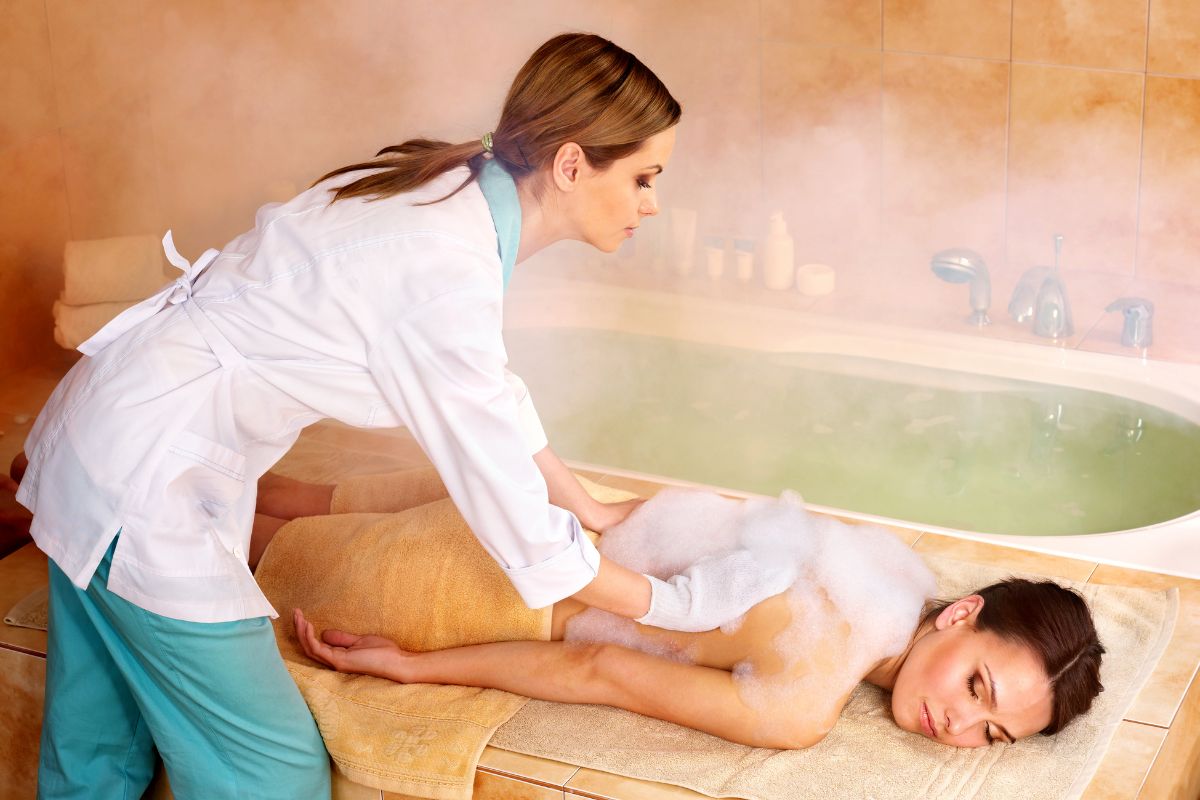
Once your natir is finished, you will be washed off with warm water (usually a bucket of water which is poured over you, or you will be taken to a shower to wash off). In some hamams, a bath of warm water may be run for you to soak in.
Sometimes you can go back into the steam room, or you can go in the sauna. This part of the experience is usually open for tailoring.
Traditionally, you would have an oil massage after the washing. I had an oil massage in a separate area, but first I was allowed to sit in an area outside of the hot room to cool down, drink a Turkish tea or Apple Tea as refreshment, before heading to another room for the massage.
If you don’t want the oil massage or to go back in the steam room, you can simply get changed and head home.
Personally, the steam bath section is the best bit and was incredibly relaxing. I didn’t go back in there as I was feeling quite thirsty and after 45 minutes, I felt like I had done my time, but in hindsight, I wish I had spent more time in there – if only to admire the mosaic-domed room.
The ornate design of room with its high central dome, was beautiful to look at and I could just lie back and admire it all day, if it wasn’t for the heat. These bathing rooms can sometimes be private but are usually shared with other people of the same sex. I only had one other woman in there with me on my visit, and it’s unlikely you’d have too many women in there at once.
Are Turkish Baths Always Separated?
If you’re visiting Turkey with your spouse and you want to take a Turkish hamam together, then you might be wondering if it’s possible.
We get it, we would love to share this experience together too, but sadly finding a hamam that has services for couples is very rare. This is because it’s not traditional to be mixed, and most hamams like to keep to their traditions.
If you want to do a couples massage, you will be better off looking at the luxury 5* hotels. We know that the Ritz Carlton in Istanbul has a couples suite in their hamam, as does the Ciragan Palace Kempinski and Catma Mescit Hamam.
The good news is you do not need to be a guest to use the hammam spa services. You can simply book the treatment packages from their websites.
???? Read more: The Best Turkish Baths in Istanbul
What do women wear to a Turkish hamam?
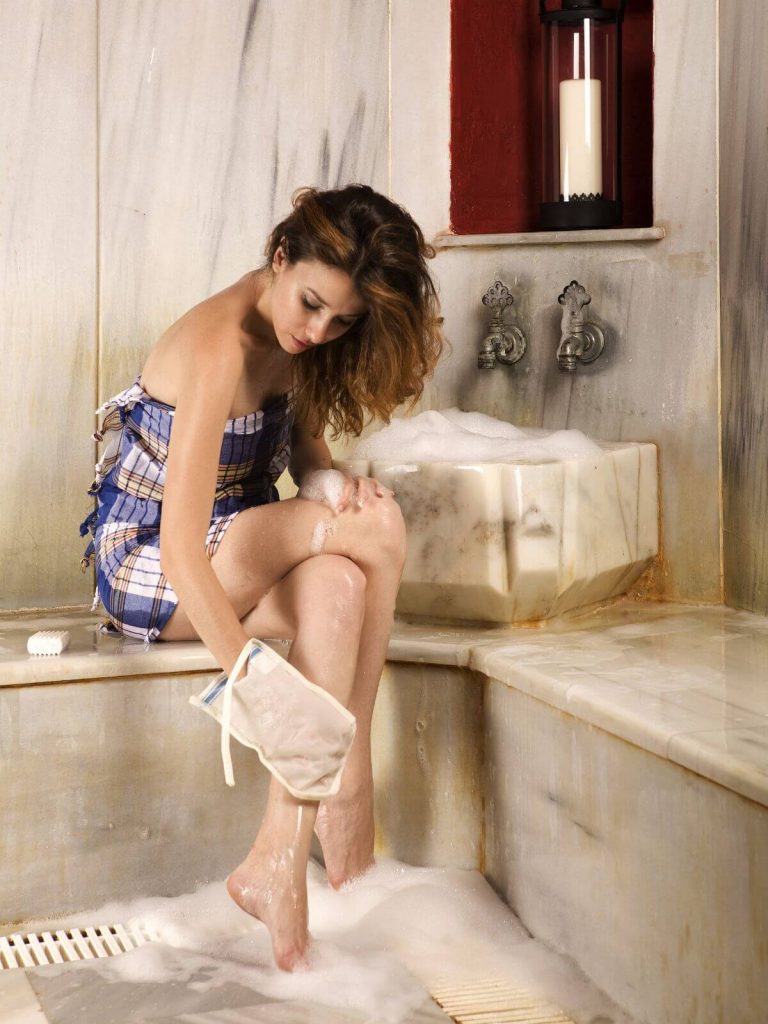
Authentic Turkish baths are traditionally nude or at the very least topless. For women, it’s often left to the woman to decide if she wants to be topless or wear a bathing suit during the bath.
Some hamams will require women to wear a bathing suit, but from my experience, the natir asked me to remove the top half of my bathing suit for the scrubbing so I probably should have just gone topless in the first place.
It really comes down to the place and their individual policies, so do look this up before you go.
If in doubt, just bring your bathing suit. If you forget and you need one, you can usually purchase one from the reception or they will give you a towel to wrap yourself in (though don’t expect it to be flattering).
FAQs about Women visiting Turkish Hamams
Here are what people usually ask us about women Turkish hammams.
Do you need swimsuit for a hamam?
Most of the time, you do need to wear a swimsuit for a hamam but you may feel more comfortable in bikini bottoms. Some traditional hamams allow the woman to choose if she wants to be topless or wear a bathing suit.
Should I shave before a Turkish bath?
You don’t need to ‘prepare’ your body in any way. You can shave, or not shave, the preference is down to you.
Do they scrub your face in hamam?
Usually they would scrub your face in a hamam as it’s an entire body scrub, but the natir will ask if you want your face to be scrubbed and you can decline if you don’t want it.
How long should I stay in a Turkish bath?
The bathing ritual usually lasts for 45 minutes but with relaxing in the steam rooms and sauna, the whole experience can last up to 60-90 minutes. It’s recommended to stay in the hot bathing room for 15-20 minutes at the most. Any longer than this and you can run the risk of heat exhaustion without realizing it.
Final Thoughts on Turkish Hamam for Women
So there you have it, this is everything you need to know about visiting a Turkish hammam as a woman. As you can see, the experience goes far beyond simple cleanliness and can be a relaxing and rejuvenating experience. You will just need to decide on the level of nudity you’re comfortable with.
Visiting a Turkish hamam is one of our favorite things to do whenever I visit Turkey and is the perfect activity to do when it’s cold and snowy in the winter.
Of course, if you have any questions or if you think I’ve missed something, do let me know in the comments!
